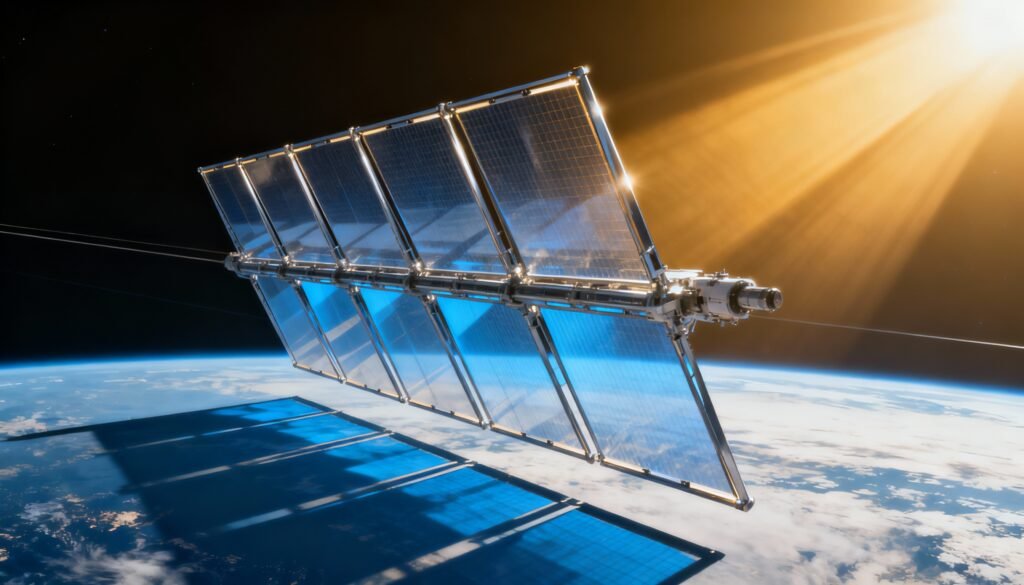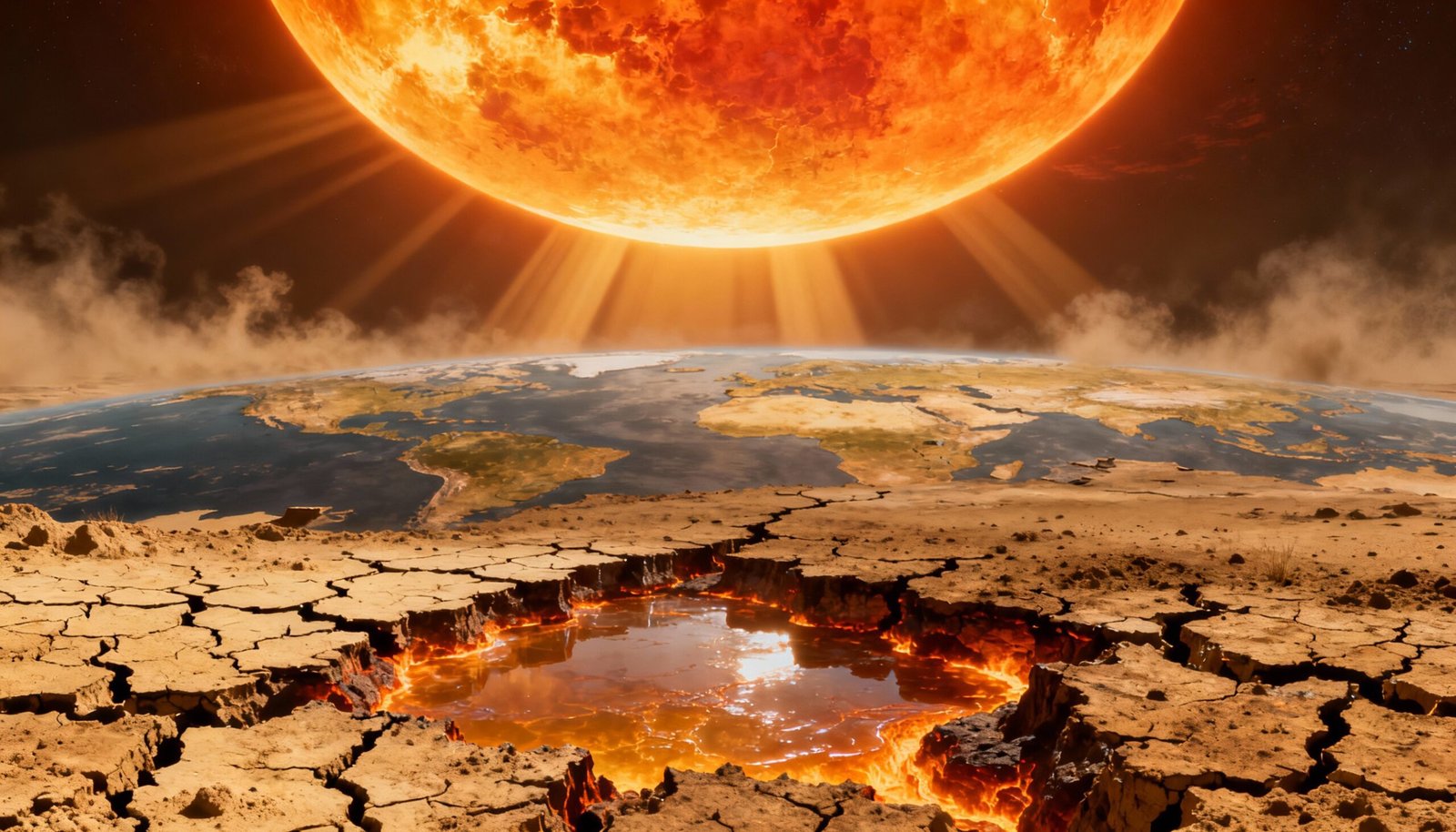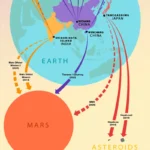Scientists studying the very long-term future of Earth have combined planetary models, biogeochemistry and powerful computers to answer a simple but chilling question: how long can an oxygen-rich, life-supporting Earth last before stellar and planetary processes make it inhospitable? The short answer from peer-reviewed work and university press releases is: on geological timescales — roughly a billion years (± a few hundred million years) — Earth’s atmosphere is likely to lose the oxygen levels that sustain most multicellular life. That process is driven by the Sun’s slow brightening and the way Earth’s carbon and oxygen cycles respond to it. At still longer timescales (many billions of years), stellar evolution will turn the Sun into a red giant and finish the job by boiling away oceans and leaving a dry, lifeless rock. Nature+2global.toho-u.ac.jp+2
What the models actually predict (the technical nutshell)
- A widely cited Earth-system modeling study (Ozaki & Reinhard et al., published in Nature Geoscience) used coupled biogeochemical and climate models across hundreds of thousands of simulated futures and found the mean lifespan of an oxygen-rich atmosphere (≥1% of present atmospheric O₂) is ~1.08 ± 0.14 billion years. In many plausible scenarios the atmosphere drops rapidly (in geological terms) once the decline starts. Nature+1
- Mechanism: as the Sun brightens slowly over time, surface temperatures rise; changing CO₂ chemistry and weathering processes reduce atmospheric CO₂ to levels too low for many plants; with plants and photosynthesis weakened, oxygen production falls and atmospheric O₂ can collapse to levels incompatible with most modern multicellular life. The model projects atmospheric de-oxygenation will probably occur before a total loss of surface water (i.e., before oceans are completely gone). Phys.org+1
The even longer, unavoidable fate — the Sun’s red-giant phase

Stellar astrophysics gives an even less ambiguous deadline for a hospitable Earth: our Sun will exhaust core hydrogen and expand into a red giant several billion years from now (commonly quoted ≈4–7 billion years). During that phase the Sun’s outer layers swell and luminosity increases dramatically — Mercury and Venus will be engulfed and Earth will be baked (and may be engulfed or left scorched close to the giant Sun). That stage will leave any surviving rocky remnant essentially sterile. NASA Science+1
Recent media reports and computational work
Some recent press coverage has emphasized new simulations and use of powerful NASA supercomputers to explore long-term habitability and to run vast ensembles of scenarios; these media articles summarize and re-report the academic work and public-university press releases that underpin the projections. (The Ozaki/Reinhard modeling work itself is the peer-reviewed backbone of the billion-year oxygen result.) PCWorld+1

But — this is far in the future. The urgent problem is now.
The billion-year and multi-billion-year timelines are useful scientific constraints on Earth’s ultimate fate, but they do not mean we can ignore today’s crises. Human-caused climate change, air and water pollution, biodiversity losses, and land-use change are already producing damage on timescales that affect our civilizations, ecosystems and many species this century and next. The Intergovernmental Panel on Climate Change (IPCC) and NASA syntheses make clear that human activities are unequivocally warming the planet, with far-reaching impacts that are avoidable only by rapid, large-scale emissions reductions and adaptation. In other words: the long-term solar-driven timeline is not an excuse for inaction — we face real, immediate risks that demand action now. IPCC+1
Mitigation, adaptation — and „what if” technology
Scientists and engineers discuss three broad responses:
- Mitigate now. Reduce greenhouse-gas emissions, cut pollution, restore ecosystems and strengthen resilience — the near-term priorities with proven benefits for people and nature. IPCC
- Explore off-Earth options. Long before any billion-year deadline, many experts argue that establishing self-sustaining settlements off Earth (Moon, Mars, orbital habitats, etc.) is a prudent hedge against catastrophic terrestrial threats. This is a multigenerational program of research, infrastructure and governance. (It’s a complement, not a substitute, for fixing Earth.) NASA Science
- Speculative planetary engineering for the distant future. Engineers have long proposed space-based solar-management concepts — from a sunshade placed near the Sun–Earth L1 point to large orbital mirror/umbrella fleets — that could reduce incident sunlight and offset warming. There are peer-reviewed feasibility studies and even NASA conceptual reports exploring such ideas. But the scale, cost, technical difficulty, governance, unintended risks (astronomical, ecological and political) and ethical questions are enormous. Recent commercial proposals to place reflective satellites in orbit (to reflect or concentrate light for terrestrial use) highlight both the potential of orbital reflectors and the controversies they raise for astronomy and the environment. In short: space shields are an idea worth research, but not a simple fix. NASA Technical Reports Server+2ScienceDirect+2
Key takeaways
- Peer-reviewed Earth-system models indicate Earth’s oxygenated atmosphere is likely to decline toward uninhabitable levels in roughly ~1.1 billion years under normal stellar brightening and geochemical evolution — a result with important implications for planetary science and the lifetime of biosignatures. Nature
- On still longer timescales (≈4–7 billion years), solar evolution into a red giant will make the planet incapable of supporting life as we know it. NASA Science
- Those long-term cosmic deadlines do not lessen our responsibility for the present. Human-caused climate change and pollution are pressing problems today; they are solvable by policy, technology and behavior changes, and they deserve the immediate global effort they require. NASA Science+1
- Advanced technological ideas (orbital shields, off-Earth settlement) may help manage or hedge future risks, but they are either speculative at scale or extremely expensive and fraught with governance questions — not an excuse to delay reducing emissions and protecting ecosystems now. NASA Technical Reports Server+1
Further reading (selected)
- Ozaki, K. & Reinhard, C. The future lifespan of Earth’s oxygenated atmosphere, Nature Geoscience (paper and open preprint). Nature+1
- Toho University press release summarizing the team’s results and timeline. global.toho-u.ac.jp
- NASA: explainer on the Sun’s life cycle and the red-giant future. NASA Science
- NASA/technical literature on space sunshade concepts and feasibility studies. NASA Technical Reports Server
- IPCC and NASA summaries on current human-caused climate change and the case for urgent mitigation. IPCC+1











